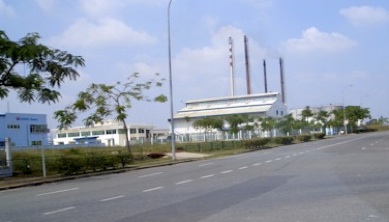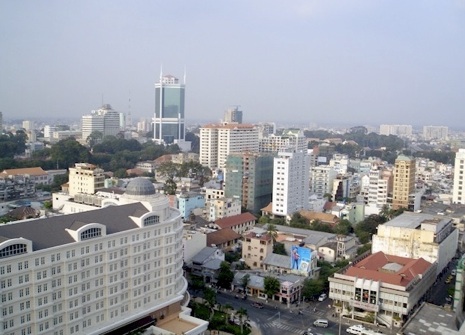


Business-in-Asia
com




Vietnam
Asia Homepage | Guidelines | Insight Asia | Plan Your Trip | FAQ | Reports | About Us | Sitemap | Contact Us




Among the new regulations that will take effect in January 2013 is the one that stipulated higher fees for obtaining visas and temporary residence cards in Vietnam, according to Tuoi Tre newspaper.
-
•The fee rate on single-entry visa will increase by US$20 to US$45.
-
•As for multiple-entry visas, the new fees will be increased to $65, $95 and $135 for validity of less than 1 month, less than 6 months and 6 months or more respectively.
-
•With respect to transfer of validity of visas or temporary residence from expired passports to new ones, the nee fee will be $15.
-
•The new fee for temporary residence cards will also be increased by $20. the rates of $80, $100 and $120 will be applied for validity terms of up to 1 year, between over 1 year and 2 years, and between over 2 years and 3 years respectively.
Vice President of the Viet Nam Tourism Association Vu The said international tourist arrivals would decrease, which might damage the tourism industry and the economy as a whole, reported online Saigon Economic Times. Tour company director Nguyen Thi Kim Lan also said that higher fees would increase tour costs and lower the competitiveness of Viet Nam in comparison to other countries in the region.
“..increasing numbers of Japanese companies ..re-look at Vietnam which is considered to be a lower cost country than Thailand with increased market potential because of Vietnam's larger population and also statistically younger population..”
About the Author:
Christopher W. Runckel, a former senior US diplomat who served in many counties in Asia, is a graduate of the University of Oregon and Lewis and Clark Law School. He served as Deputy General Counsel of President Gerald Ford’s Presidential Clemency Board. Mr. Runckel is the principal and founder of Runckel & Associates, a Portland, Oregon based consulting company that assists businesses expand business opportunities in Asia. (www.business-in-asia.com)
Until April of 1999, Mr. Runckel was Minister-Counselor of the US Embassy in Beijing, China. Mr. Runckel lived and worked in Thailand for over six years. He was the first permanently assigned U.S. diplomat to return to Vietnam after the Vietnam War. In 1997, he was awarded the U.S. Department of States highest award for service, the Distinguished Honor Award, for his contribution to improving U.S.-Vietnam relations.
Sustain
Follow us on Twitter: @InsightNewsAsia
Copyright © 2013: Runckel & Associates, Inc.
Visit our other website: Asia-Art.net
www.Business-in-Asia.com
The region-based minimum wage levels will be VND250,000-300,000 (US$14.4) per month higher than the current rates in effect in 2012.
The four new minimum wage rates for regions 1, 2, 3 and 4 will be VND 2,350,000 ($113), VND 2,100,000, VND 1,800,000 and VND 1,650,000 per month respectively.prestigious brand name in industrial, residential, urban and transportation infrastructure, Becamex always looked out for their employees and their neighbors in Binh Duong as they took on infrastructure and other industrial and building projects.
According to Vietnam News, this increase affected every company, business, co-operative, farm, household, individual and organization that hires employees.


Pictures: Vietnam 2012 (left: Ho Chi Minh City; right: My Phuoc Industrial Park, Binh Duong Province.

Our comment: Vietnam currently has some of the highest visa costs in the region. Tourists to Thailand from most countries are granted a visa free of charge to Thailand. Cambodia only charges $20 and Laos is similar. Tourism in all three countries is increasing markedly but Vietnam's tourist numbers are on a much lesser growth path. We believe that Vietnam needs to cut back its visa charges and the relatively more bureaucratic application process in the interest of assisting tourism and business.
Vietnam now has four regions, ranked according to the socio-economic development level of each region, changed from previously all as one region.
-
•Region I covers the urban districts of Ha Noi and HCM City.
-
•Region II covers rural districts of Ha Noi and HCM City and urban districts of cities including Can Tho, Da Nang, and Hai Phong.
-
•Region III covers provincial cities and some districts of Bac Ninh, Bac Giang, Hai Duong, and Vinh Phuc.
-
•Region IV covers the remaining localities.
Vice President of the Viet Nam Tourism Association Vu The said international tourist arrivals would decrease, which might damage the tourism industry and the economy as a whole, reported online Saigon Economic Times. Tour company director Nguyen Thi Kim Lan also said that higher fees would increase tour costs and lower the competitiveness of Viet Nam in comparison to other countries in the region.
2013: Higher Fees for Obtaining Visas
2013: Minimum Wage Increased
Allowances and social benefits are calculated based on the minimum wage, in accordance with the law. Moreover, employers are still encouraged to pay their employees more than the minimum wage. The wage increase also pays skilled employees at least 7 times more than the minimum wage.

2012: Vietnam successfully attained a lower consumer price index (CPI) rise than expected. The CPI increased by only 6.81% compared with 2011, lower than the 11.75% year year on year rise in 2010 and an 18.13% surge in 2011, reported Tuoi Tre.
2012: Vietnam's trade surplus was unexpectedly reported lower for the first time after 20 years. 2012 is also the first year the national foreign exchange reserve reached the standard of the International Monetary Fund (IMF) of about 12 weeks of imports of the economy, or over $20 billion, with the help of the surplus, reported the paper. Foreign-invested firms in Vietnam exported $12 billion more than they imported while local firms imported $11.7 billion more than they exported. Shrinking domestic demand for imported machinery and equipment due to the stagnation in the operation of local businesses and tighter lending regulations are cited to be the cause of the changes. The direct impact of the surplus is that the average interbank foreign exchange rate between the US dollars and Vietnam dong still holds in the VND20,828 a US dollar mark set by the beginning of the year.
2012: Financial Difficulties. Even though in 2012, the record numbers of newly established enterprises was down only 10% and registered capital down 8.4% respectively, compared to the same period in 2011; there were about 55,000 firms having been dissolved or closed, leaving millions of workers unemployed. According to the Saigon Times, some of the specialists also commented that the big number recorded by authorities as newly established enterprises were just the effect of new form applications of companies taking on new names to access bank loans. The Chamber of Commerce and Industry (VCCI) said this was one of the darkest periods for Vietnamese enterprises. However, later on in the year, the government continued to announce a new rescue package worth tens of trillions with focus on reducing taxes and lowering interest rates, reported the papers in Vietnam.
Banking, securities and real estate were facing difficulties. Mounting bad debts in the real estate sector had a profound influence on the local banking system. Bad debts accounted for 8.82 per cent of total outstanding loans, equivalent to nearly VND240 trillion, the highest ever. As of 3rd quarter of 2012, 56 out of 100 securities companies reported losses. There were three securities companies which voluntarily left the playground, withdrawing from membership of two stock trading floors - Hanoi Stock Exchange (HNX) and Ho Chi Minh Stock Exchange (HoSE). The handling of weak banks, besides the long-term restructuring of the system, is hurriedly taking place with 5 of 9 weak banks having almost completed the restructuring process. Despite this, most experts note that much remains to be done to reinforce a weak banking system.
2012: Vietnam posted a slowdown in foreign capital inflows. Records from the government showed a 26% drop in FDI. According to Saigon Times, Japan remained the largest investor with total registered capital of more than US$5 billion, occupying 40.3 percent of total FDI in Vietnam, followed by Singapore, the Republic of Korea, Hong Kong (China) and Singapore.
The southern province of Binh Duong was the most attractive destination for foreign investors this year with more than $1.63 billion, making up 20.9 percent of the country's total registered capital. This was followed by the northern city of Hai Phong, the capital city of Hanoi and the southern province of Dong Nai, with more than $1.11 billion, $618.8 million and $468.7 million, respectively.
Our comment: Despite the slowdown in FDI which has made this a relatively more difficult period for Vietnam, areas like Binh Duong have been able to achieve fairly substantial growth figures by working to attract Japanese companies and companies that formerly invested in China but who decided to relocate because of China's rising labor costs, benefits and other factors. Furthermore, political tension between China and Japan over the disputed islands that both claim and occasional boycotts of Japanese goods in China or protests at Japanese factories are causing increasing numbers of Japanese companies to re-look at Vietnam which is considered to be a lower cost country than Thailand with increased market potential because of Vietnam's larger population and also statistically younger population. The coming year, 2013, will not be an easy year for many Vietnam cities as they compete for a smaller basket of FDI opportunities but good companies like Becamex, VSIP and others will prosper as they have much greater management talent and more experience in foreign market promotion.